Bangladesh: A Country Underwater, a Culture on the Move
In this low-lying, coastal nation inundated by flood after flood, a rural exodus to the cities is reshaping life everywhere.
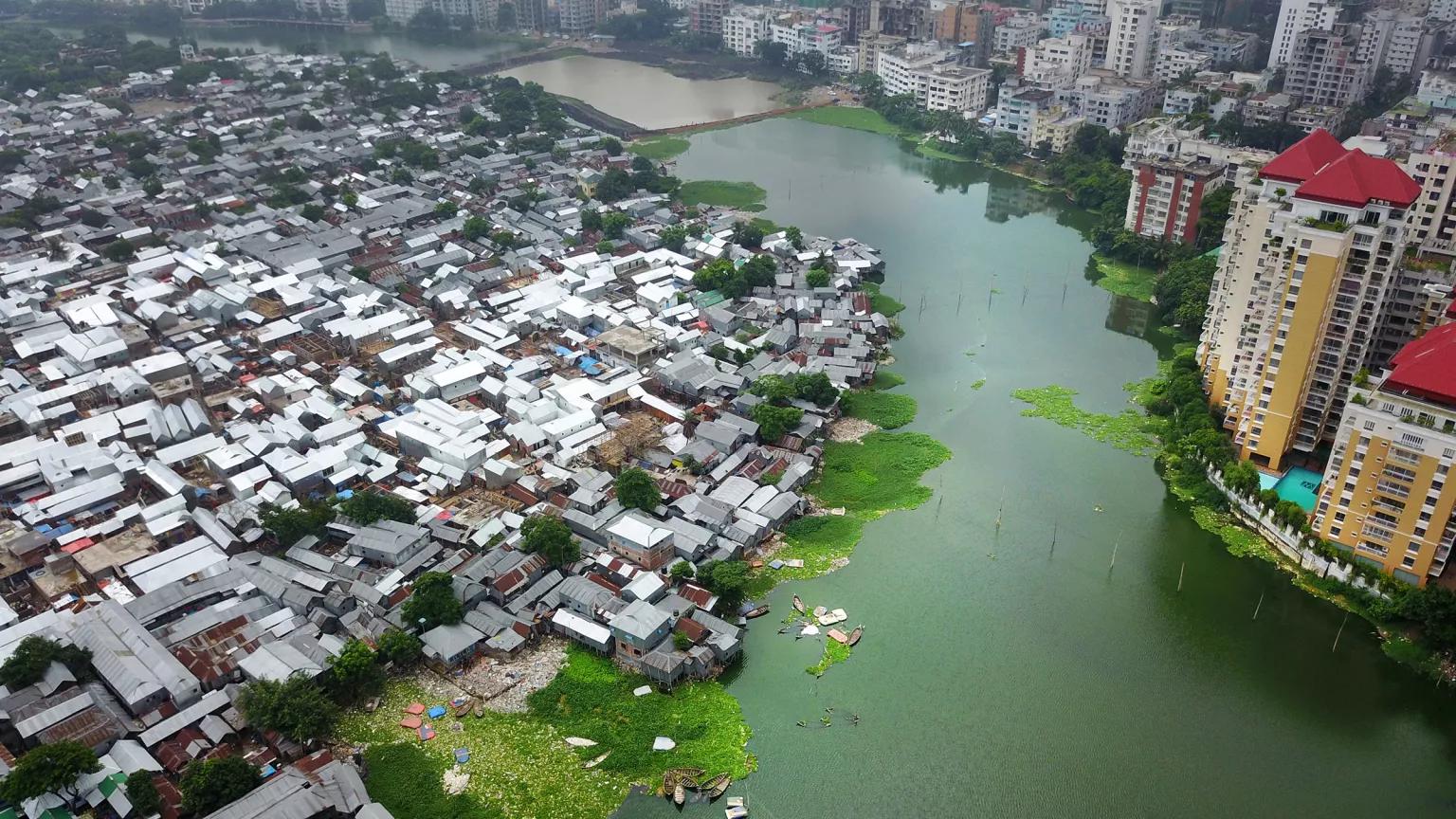
Dhaka's greater metropolitan area is home to 18 million residents. Many families live in the city's most flood-prone areas.
Frank Sedlar
In Bangladesh, the next big storm is always just on the horizon. A four-month monsoon season, from June through September, routinely inundates this riverine country. Meanwhile, a quarter of Bangladesh’s landmass, bound on the south by the northern Indian Ocean, hovers less than seven feet above sea level. And as floods grow increasingly frequent and severe, the 163 million who make their home in Bangladesh, the world’s most populous delta, know little escape from water.
Often referred to as “ground zero for climate change,” Bangladesh ranked sixth on the 2018 Global Climate Risk Index, and for many Bangladeshis, particularly the rural communities in low-lying coastal areas, those risks are already unmanageable. Riverbank erosion displaces 50,000 to 200,000 people here each year. Thousands more flee every time a major cyclone hits the coast. The most recent came in the midst of the Rohingya refugee crisis last May, and there were at least 12 others dating back to 1965. Not only do the intensifying storms destroy homes and livelihoods, but they also contribute to higher water and soil salinity. This saltwater incursion leaves millions with little to drink or eat.
Experts from the International Organization for Migration point to a mass exodus of rural Bangladeshis toward the country’s cities, in particular to its capital, Dhaka. A 2007 World Bank report estimated that 300,000 to 400,000 migrants arrive in Dhaka each year, with “salinity intrusion” considered a major factor for why so many are fleeing the country’s coastal belt. These migrants usually end up in the city’s poorest, most flood-prone areas. They make do the only way they can, eking out odd jobs as waste pickers, domestic workers, or garment factory laborers. They rely on handouts like chira (dry, flattened rice) and bathe in the Buriganga River, which serves as a dumping ground for chemical waste from mills and factories, household garbage, sewage, and oil, among other pollutants.
There are few other places to go when your country is being slowly swallowed by the sea. Climate experts predict that by 2050, rising sea levels will submerge some 17 percent of the nation’s land and displace about 20 million people. And the whole of Bangladesh is roughly the size of Iowa. So Dhaka, for so many of its transplants, is a city of last resort.
Where Rice Can No Longer Grow
In Koyra Upazila, on the southwestern coast, a community of rice farmers clings to its way of life in a patchwork of mangroves and wetlands on the edge of Sundarbans National Park. Despite its remote location and severe freshwater shortages, the area is home to nearly 10 million people. The farmers live in poverty, with little water to irrigate their crops or to drink.
In southwest Bangladesh, embankments separate and protect rice paddies and shrimp ponds from Kapotaksma (left) and Shakbaria (right) rivers during the rainy season. Drone footage by Frank Sedlar.
An aerial view of the region shows rice paddies and shrimp ponds sandwiched on a 500-yard-wide strip of land between the Kapotaksma (left) and Shakbaria rivers. Twenty-foot-high embankments made of claylike soil, prone to erosion, form a fragile boundary. When a cyclone sweeps through, the land floods with brackish waters. The infiltration of saltwater from the Bay of Bengal and from the expansion of saltwater aquaculture activity in the region has turned many of the area’s rice growers into reluctant shrimp farmers. “The land becomes too saline to farm,” says Yukyan Lam, an environmental justice and health science fellow at NRDC, who has conducted research in Bangladesh. They either convert their land into saltwater shrimp ponds or rent their land out, for a small sum, to wealthier operators.
Mossarof Sana, 56, made the switch some 25 years ago. The water filling his paddies became too salty to grow rice, a staple of the Bangladeshi diet. Since then he has made a meager living out of his farm and employs only a single laborer, Ruhul Aminin.
Shrimp farming offers far fewer job opportunities for daily workers than rice growing does, notes Lam. A typical saltwater shrimp farmer often needs just a couple of laborers who will clean the algae and weeds and maintain the pond. On the other hand, wet-rice cultivation is a labor-intensive operation. Seeds are first sown in small beds, after which the seedlings are transplanted to prepared rice paddies, where they must be delicately tended and finally threshed by hand.
With rice paddies increasingly flooded out in Bangladesh’s coastal areas, the jobs have diminished too. “It might trigger a seasonal migration [of laborers] at those times of year, especially in the dry season, when there’s no work,” Lam says. “They might come back during the rainy season,” she notes, but in any event, the transition to shrimp farming has resulted in “a new type of labor market” in which many workers are more vulnerable.
The loss for these communities, says Lam, is twofold: freshwater and self-sufficiency. “The soil in their homestead gardens and the water in the ponds used for bathing, cooking, and irrigating crops are more saline and can’t be used the way they once were,” she points out.
Sana’s family must now walk two miles to the nearest well that has drinkable water, a task that takes at least an hour a day. He dreams of returning his fields to rice.
Dhaka: No Vacancy
For those who cannot stay, Dhaka—which the World Bank has called one of the fastest-growing megacities in the world—is a common destination. But with 18 million people in the metropolitan area, the developing city strains to keep up with its residents’ needs. Dhaka’s frenzied streets attest to the infrastructure challenges, as do its dismal slums, which house more than a million people, according to a 2014 census.
Nurjahan Begum and her family of eight landed in Dhaka a decade ago after enduring seven cyclones in the Chandpur District of south-central Bangladesh, where the Dakatia and Meghna Rivers meet. Floodwaters destroyed their home on four occasions, and ultimately their fields as well.
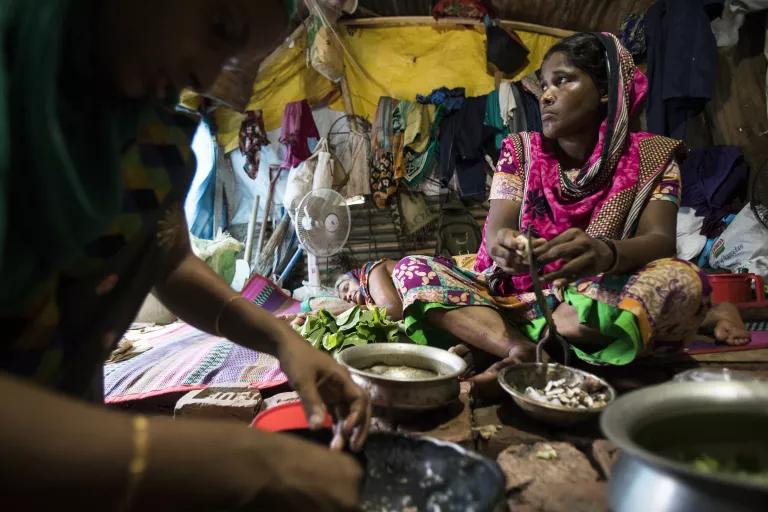
Sajeda (right), 40, prepares food for her family while her mother, Nurjahan Begum, rests. Eight members of the family live in a makeshift tent after a fire destroyed their home.
Marcin Szczepanski
“I couldn’t provide my children with food or water or vegetables. I couldn’t even manage a stove. I had to force my children to eat doughs of flour while we were living on the road,” she says, referring to the meager relief goods her family received on occasion. “We ate the same thing for at least a month.”
After the floods, Begum’s children suffered from severe dysentery, diarrhea, cholera, and fever. Crowded into other people’s homes, she says, “we had to carry drinking water from very far away. Sometimes we had to drink water from the river as well.” She adds that there were no nearby tube wells, a type of drinking water infrastructure that Bangladesh has used since the 1970s to reduce disease caused by pathogen-laden surface waters.
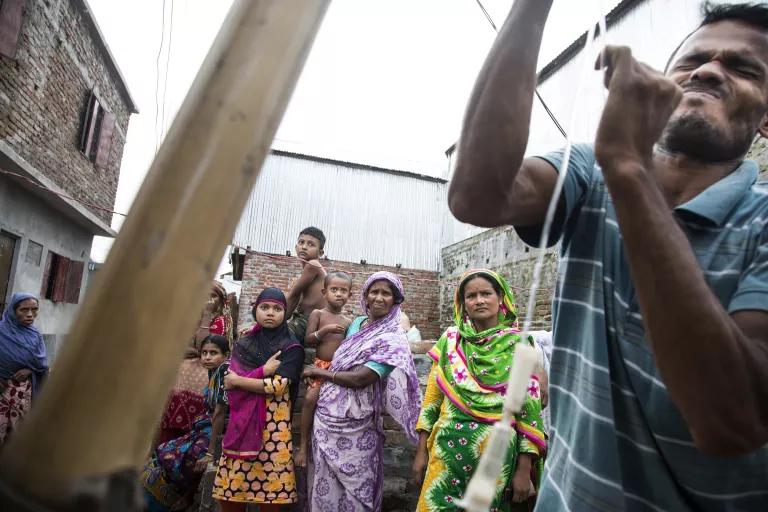
In anticipation of heavy rains, Alauddin, 28, pulls on a tarp that covers the families makeshift shelter.
Marcin Szczepanski
For the past 10 years, Begum’s family has moved around from place to place, unable to make enough money to build a permanent shelter. In the slum of Korail, a fire burned through their home and neighborhood last year. They lost most of their possessions in the fire, salvaging only a copy of the Quran and an old TV set. They now live in a makeshift tent roughly 20 by 26 feet in size. Their family’s sole wage earner, her son Alauddin, does occasional electric, mortar, and other construction jobs, affording them a limited diet of vegetables and small fish.
Crossing the Border
Instead of migrating to the city, many displaced Bangladeshis cross the border to work in India—its government reports that 20 million Bangladeshi migrants are staying there illegally. Such is the case with Prodip Mondal, 30. While his wife, Lata Rani, 23, and family stay behind in Koyra, Mondal works as a musician. He plays both in India and at home, but it’s not a career known for stability. His job outlook is further complicated by the anti-immigration tensions rising in India, where some officials seek to harden the border with the predominantly Muslim nation of Bangladesh.
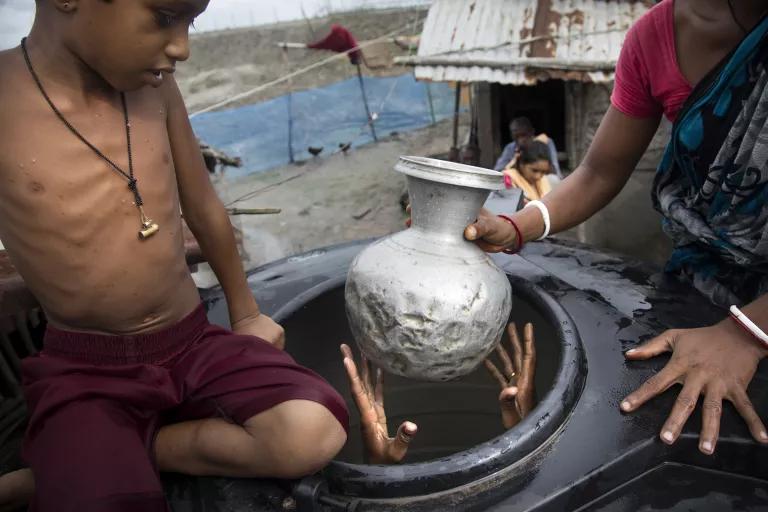
Subas Mondal, 35, cleans the inside of a water tank installed near his home. Salinated water continues to push further inland, polluting wells and forcing locals to travel farther distances for clean water.
Marcin Szczepanski
Back in Koyra, Mondal was once a rice farmer, but lost all 35 acres of his ancestral land when Cyclone Aila hit the coast in 2009. The Kapotaksma River swelled, forcing local families to abandon their homes and stay for weeks in makeshift shelters on what was left of the river’s embankments. When the brackish water finally receded, Mondal realized that the river had expanded and permanently shifted its boundaries, swallowing the fields that had supported his family for three generations.
"I can now fish where my fields used to be," he says, gesturing to the vast body of water in front of the embankment. Mondal says he has panic attacks when he contemplates when the next flood may come, often waking up in the middle of the night drenched in sweat. He worries about what will happen to his family.
Time for Plan B?
If Bangladesh’s status as “the poster child of climate vulnerabilities and impacts” holds, Mondal’s family will likely be unable to stay in their homeland. Their plan B of moving elsewhere, however, is an issue that international, domestic, and local leaders continue to debate. “You talk to international experts and researchers, and they’ll say yes, we should think of a plan of migration,” Lam says. Yet among national NGOs and governmental officials, she adds, migration appears to be the least popular option, because the cities are overcrowded and resources are stretched thin. At the community level, however, people tend to agree with the sentiments of the climate researchers. “When you talk to the farmers and you ask them, what are your hopes and dreams for the next generation, none of them want their children to continue to eke out a living in agriculture,” Lam says. “They want their children to go to the city, get an education, and get a job that is less dependent on the land.”
There are signs of hope, albeit small ones. Begum says her own sons are illiterate; she couldn’t afford to send them to school when they lived in the countryside. But in Dhaka, her grandsons are able to attend school. A doctor, too, is a resource newly available to her family in the city. “These days we have more advanced medicines,” she says. “People used to die from cholera, they used to die from TB, but nowadays they are curable. In Allah’s mercy, almost everything is curable now.” Unfortunately, the cure for the forces of climate change that are shaping the futures of Begum’s grandchildren and their generation remains, so far, painfully out of reach.
This article was originally published on onEarth, which is no longer in publication. onEarth was founded in 1979 as the Amicus Journal, an independent magazine of thought and opinion on the environment. All opinions expressed are those of the authors and do not necessarily reflect the policies or positions of NRDC. This article is available for online republication by news media outlets or nonprofits under these conditions: The writer(s) must be credited with a byline; you must note prominently that the article was originally published by NRDC.org and link to the original; the article cannot be edited (beyond simple things such grammar); you can’t resell the article in any form or grant republishing rights to other outlets; you can’t republish our material wholesale or automatically—you need to select articles individually; you can’t republish the photos or graphics on our site without specific permission; you should drop us a note to let us know when you’ve used one of our articles.

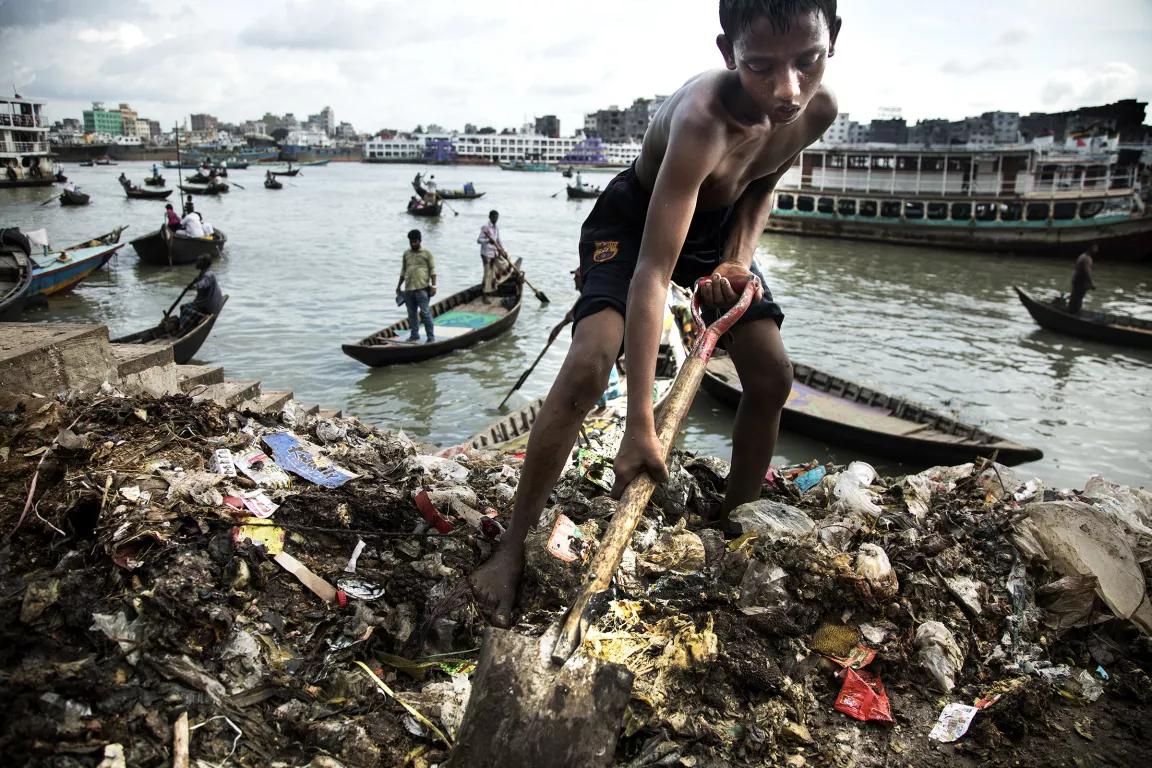


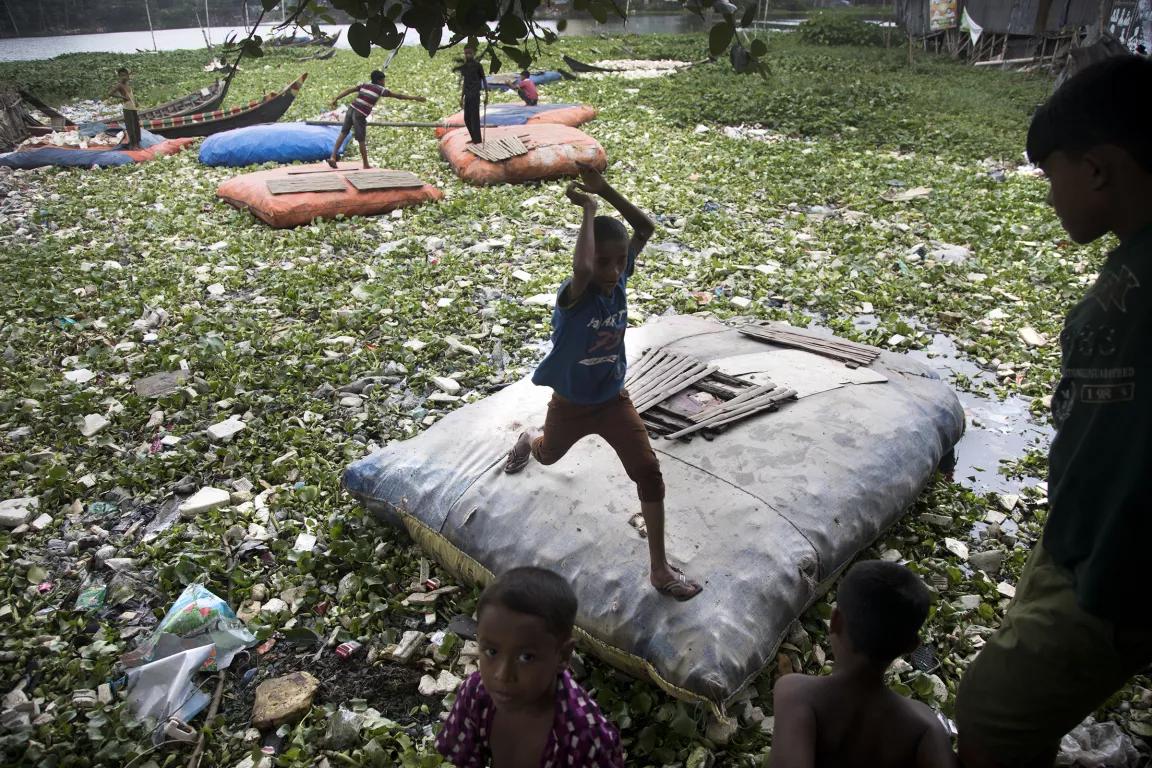


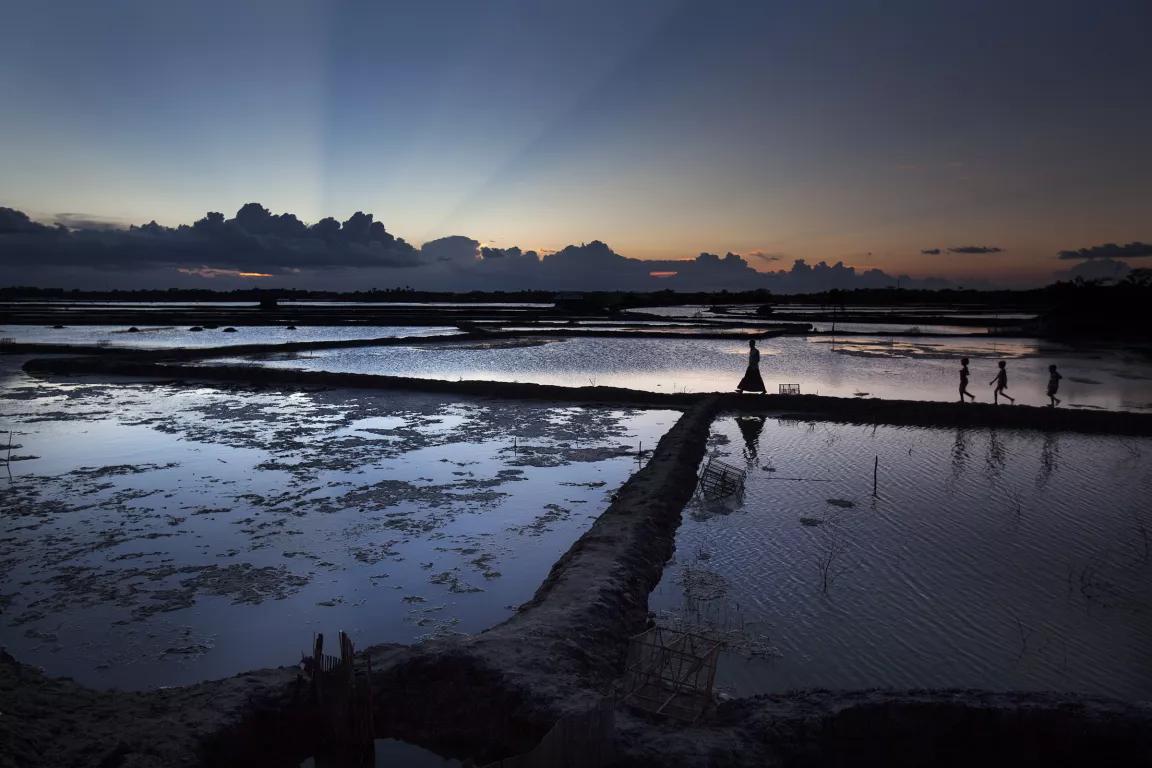
Shared Knowledge Is Power in the Northern Mariana Islands
1.5 Degrees of Global Warming—Are We There Yet?
Sea Level Rise 101
Shared Knowledge Is Power in the Northern Mariana Islands
1.5 Degrees of Global Warming—Are We There Yet?
Sea Level Rise 101
Shared Knowledge Is Power in the Northern Mariana Islands
1.5 Degrees of Global Warming—Are We There Yet?
Sea Level Rise 101
Shared Knowledge Is Power in the Northern Mariana Islands
1.5 Degrees of Global Warming—Are We There Yet?